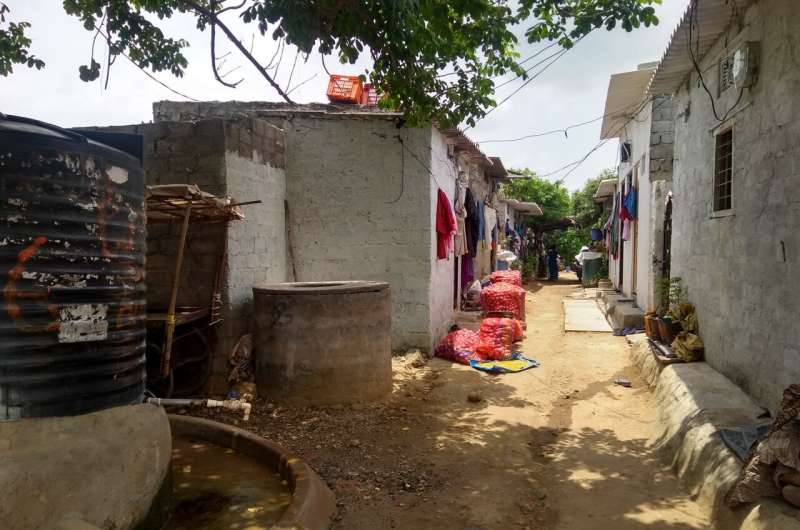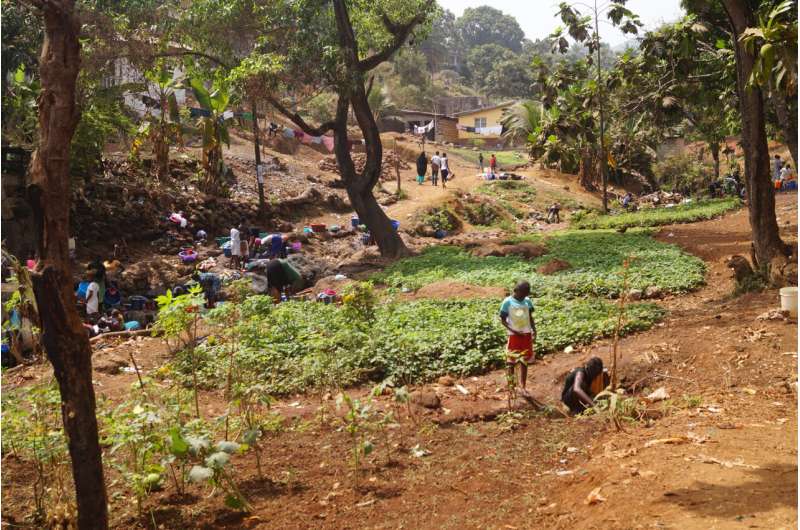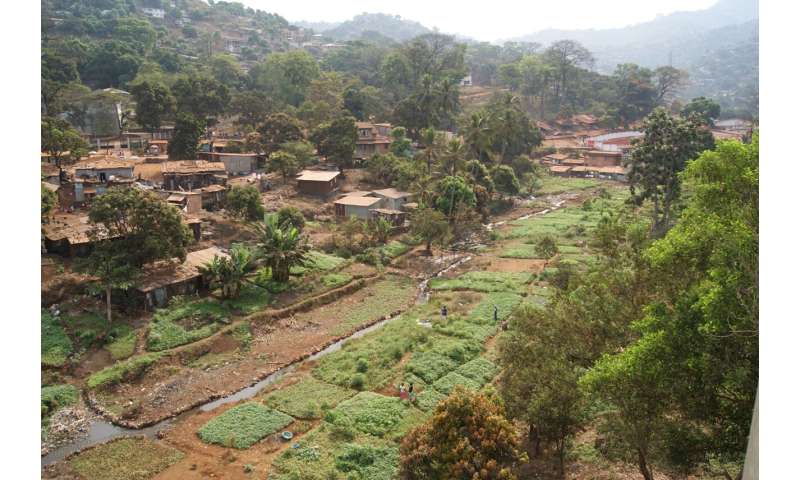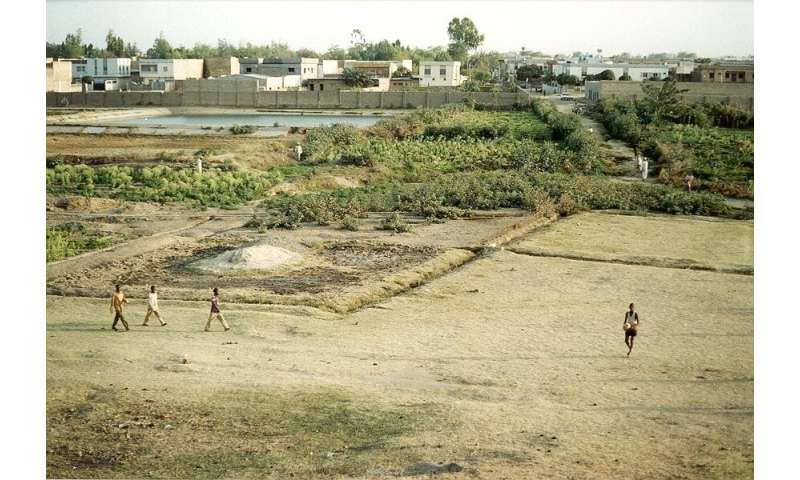Access to services is often worst in suburban areas

The world we live in is often divided using a binary urban-rural distinction, despite a huge gradient of settlement patterns in and around cities—ranging from urban to the most remote rural areas. New research led through a joint U.K.-India research project and published in Nature Sustainability, considers urbanization by looking at shifts in natural, engineered and institutional infrastructure. The study, focused on the Global South, suggests that rapid change in suburban (termed "peri-urban") areas results in people living in those areas having a poorer quality of life than people living in urban and rural areas.
"The world's urban population will continue to grow leading to an increasingly urbanized planet, often resulting in urban expansion, as cities extend outwards incorporating land around them. This expansion of cities is especially rapid in developing countries in Asia and Africa," says Professor Kenneth Lynch (University of Gloucestershire).
Professor Simon Willcock from Bangor University and Rothamsted Research says, "As urban areas expand, the characteristics and services available within areas change. For example, nature and natural products are often more immediately available in rural areas, with lower levels in urban areas, whilst built infrastructure shows the opposite pattern. This is sometimes also accompanied by a shift from local, traditional leadership in rural locations, to more central governance in cities."
The research presents a new theory of Peri-Urban Turbulence, as Dr. Paul Hutchings from Leeds University explains: "The rate of nature is damaged and the cost of building new infrastructure are major drivers in determining the quality of life of people living in peri-urban areas. For example, when extraction of products from nature has a high environmental cost, then nature can only support small numbers of people. Similarly, when the cost of building infrastructure is also high, then it is only economically viable to support larger communities. In a situation such as this, resources which come from the natural world are likely to disappear before they can be replaced by built infrastructure."

"Previous evidence supports this. For example, child health in East Africa is lowest in those communities living between the city and countryside, whilst a study in South Africa found that around two thirds of urban and rural citizens report that their quality of life had improved over the last five years, but only half of respondents reported such improvement in peri-urban zones," says Professor Kenneth Lynch.
Professor Simon Willcock explains the limitations of the theory: "This type of negative experience in peri-urban areas is greater for some services than others, and varies across geographic areas. For example, most food is grown in rural areas, but this can also be done within cities. Food can also be transported by road within cities with relative ease. However, there are likely to be big differences between groups living in each context. For example, higher income households and communities living in peri-urban areas have better access to the scarce resources. They can buy-in their own water, electricity, sanitation and so forth."
-

A site that floods during the rainy season that has thus far prevented development, allowing local people to use it for small-scale vegetable gardens near Freetown, Sierra Leone. Since this photo was taken two large developments have encroached on this site displacing the cultivators reducing the cultivated land cover and restricting the drainage channel, exacerbating flood water during the rainy season. Non-biodegradable waste (such as plastic bags and bottles) is used by cultivators to form drainage channels and protect plots from erosion. Credit: Professor Kenneth Lynch -

A seasonally flooded site within the old walls of the city of Kano, Northern Nigeria. You can see sites in the foreground are being used for small scale agriculture, but also plots have been marked out for construction and some sand and cement has been deposited ready for the installation of boundary markers. In the background you can see the high value residential areas that have a wall separating their neighborhood from the agricultural site. Many of the cultivators grow rice in the rainy seasons indicating this is for household consumption. During the dry season the cultivable land reduces to very close to the stream which is heavily polluted by nearby clothes dying works and the residential area. Encroachment on this site for residential development will exacerbate flooding further down the watershed. Credit: Professor Kenneth Lynch -

This photo is taken in a peri-urban area near Hyderabad, India. In the foreground, you can see a waste disposal area, receiving waste from the surrounding peri-urban areas, but also from the main city (shown in the background). This waste may present a hazard to the health of those living nearby, and risks polluting the nearby natural areas (shown in the middle ground). Credit: Professor Simon Willcock
Dr. Paul Hutchings concludes, "The bumpy road between natural and built infrastructure can be avoided. Some natural infrastructure can be conserved throughout urbanization through good city planning enforcing protection of green space. As well as this, services, such as municipal water utilities, can be subsidized so that they can be provided to people in peri-urban areas. Urban and rural planners, designers and architects should be working together to pre-empt the needs within newly expanded areas, and act quickly to prevent lower quality of life of the people living there."
More information: Kenneth Lynch, Understanding rural–urban transitions in the Global South through peri-urban turbulence, Nature Sustainability (2022). DOI: 10.1038/s41893-022-00920-w. www.nature.com/articles/s41893-022-00920-w
Journal information: Nature Sustainability
Provided by Bangor University





















